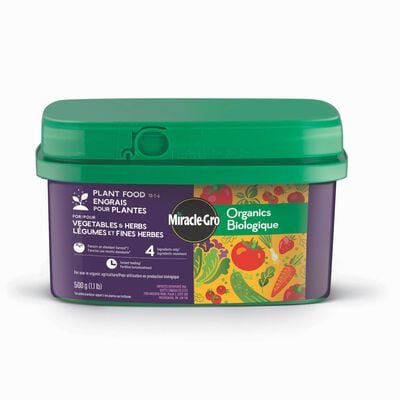
Planting, Growing & Harvesting Kale
Plant Kale Seeds or Transplants
Kale is a hardy, cool-season green and is part of the cabbage family. It grows best in the spring and fall and can tolerate fall frosts. So the best time to plant is about 1 month before your last frost date in spring and 6 weeks before your first frost date in fall. Plant in well-drained soil, amended with compost or garden soil, such as Miracle-Gro® Organics Garden Mix for Vegetable & Herbs. Sow kale seeds 1 cm (1/2") deep and 2.5 cm (1") apart, or transplant seedlings 15 cm (6") apart in rows 60-90 cm (2-3 ft) apart. Gradually thin the seedlings to about 30 cm (12") apart.
Feed and Water Your Kale
When your kale seedlings are 10 cm (4") tall, begin feeding them with a water-soluble plant food, such as Miracle-Gro® Water Soluble Tomato, Fruit & Vegetable Plant Food . Water frequently enough to keep the soil consistently moist but not soaking wet.
Conserve Moisture with Mulch
Add a 8 cm (3") layer of mulch, such as Scotts® Nature Scapes® Advanced Colour Enhanced Mulch, around the plants to help retain moisture, keep the soil cool and prevent weed growth. If you mulch the soil heavily after the first hard freeze, your kale may continue to produce leaves throughout the winter.
Harvest Your Kale
Kale leaves are ready to pick 55 to 75 days from seeding, or when the leaves are about the size of your hand. The central rosette is the tastiest part of the plant, but let it grow if you want the plant to produce more leaves. The small, tender leaves can be eaten uncooked and chopped up to use in salads. You can store kale as you would any other leafy green; put the kale in a plastic bag and store it in the refrigerator. It should last about 1 week.
